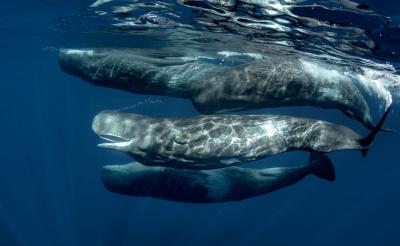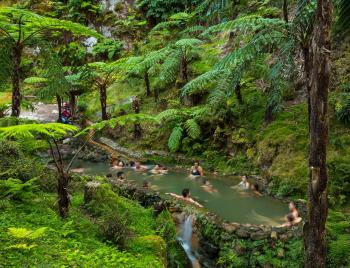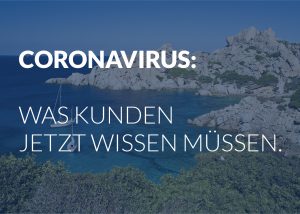Almost in the middle of the Atlantic Ocean, the archipelago of the Azores rises from the sea. The constant wind makes the islands belonging to Portugal the ideal place for sailing, surfing and other water sports. The different landscapes of the islands – green mountains and valleys, volcanoes, crater lakes, forests, hollows, thermal springs, black sand beaches – invite you to hike, swim and relax. A paradise for outdoor fans and those who do not want to spend their vacations in mass tourism. Permanent sunshine is no guarantee here, the weather is changeable but mild. Perfect for active vacations. The starting point Ilha do Faial is in the center of the Azores and opens up many route possibilities. Or you can start from Sao Miguel östlich of Faial and you will be right on a large island, which is also perfect for hiking.
Climate: subtropical with temperatures between 20 and 27 degrees
.
Sailing season: all year
Popular Yachts | Azores
| Cabins: | 3 | Berths: | 6+1 |
|---|---|---|---|
| Year: | 2016 | Sail | Battened |
| Yacht-ID | 14578 | L/D: | 12.35 / 2.09 |
| Cabins: | 4 | Berths: | 8+2 |
|---|---|---|---|
| Year: | 2016 | Sail | Battened |
| Yacht-ID | 7773 | L/D: | 14.15 / 2.20 |
| Cabins: | 3 | Berths: | 6+2 |
|---|---|---|---|
| Year: | 2016 | Sail | Battened |
| Yacht-ID | 7774 | L/D: | 12.35 / 2.10 |
| Cabins: | 4 | Berths: | 8+1 |
|---|---|---|---|
| Year: | 2016 | Sail | Battened |
| Yacht-ID | 30937 | L/D: | 14.27 / 2.10 |
| Cabins: | 3 | Berths: | 6+1 |
|---|---|---|---|
| Year: | 2017 | Sail | Battened |
| Yacht-ID | 12071 | L/D: | 11.23 / 1.90 |
| Cabins: | 3 | Berths: | 6 |
|---|---|---|---|
| Year: | 2018 | Sail | Battened |
| Yacht-ID | 15316 | L/D: | 11.23 / 1.90 |
Yacht charter Azores
The archipelago consists of nine islands, mostly of volcanic origin and part of the Mid-Atlantic Ridge. The islands belong to Portugal, therefore you only need a valid identity card to enter the country. Because of the special peripheral location of the islands, however, must be cleared in and out on each island. Payment is made with the Euro. The journey from Germany takes about 6 hours, from some German cities there are also direct flights.
The islands are mainly a term from the weather forecast because of the Azores High, which gives us nice weather in Central Europe. On the islands themselves the weather can be very changeable, because they are located in the open North Atlantic. The temperatures are mild around 20 to 25 degrees. The winds blow steadily here all year round, and in winter there can be storms with heavy rainfall. The Gulf Stream brings mild water temperatures around 20 degrees. An area for experienced sailors and outdoor enthusiasts.
Yacht charter Azores - outdoor paradise in the middle of the Atlantic Ocean
The Azores are suitable for active vacationers as well as for relaxation seekers. The islands are ideal for hiking due to the mild climate and varied landscapes. The routes lead through green forests, to the highest points of the mid-Atlantic ridge or along beautiful meadows. You will be rewarded with great view points over the islands. There are trails of varying difficulty and duration.
 Mild temperatures also prevail underwater. Divers and snorkelers are attracted to the islands with their crystal clear waters. The volcanic coastline, with its crevices, caves and grottos, offers not only fantastic scenery, but also shelter and protection for animals and plants. On the islands, diving centers offer excursions and equipment. From small fish and mackerel to bonito and other large fish, dolphins and sea turtles, there is much to see. Whaling was practiced around the Azores for several centuries, but today whale watching is the order of the day. Up to 20 whale species can be encountered here. Due to strong currents and great depths, diving requires experience.
Mild temperatures also prevail underwater. Divers and snorkelers are attracted to the islands with their crystal clear waters. The volcanic coastline, with its crevices, caves and grottos, offers not only fantastic scenery, but also shelter and protection for animals and plants. On the islands, diving centers offer excursions and equipment. From small fish and mackerel to bonito and other large fish, dolphins and sea turtles, there is much to see. Whaling was practiced around the Azores for several centuries, but today whale watching is the order of the day. Up to 20 whale species can be encountered here. Due to strong currents and great depths, diving requires experience.
Due to their location, the Azores have been the focus of various naval powers in the past and represented a link between the old and the new world. A certain amount of wealth came to the islands through traveling merchants and resident traders. However, this also made them a desirable target for pirates, who haunted the islands and hid in the deep caves of the coast.
The archipelago is divided into three groups. The base of São Miguel is located in the southeastern Grupo Oriental. This includes the only non-volcanic island, Santa Maria. São Miguel, the green island, leads hikers and nature lovers through forests, past waterfalls, to crater lakes and into higher mountain regions. Typical are also the thermal springs, in which one can also bathe. The island is also home to one of the few tea plantations in Europe.
From our base Ilha do Faial we can explore the central part of the archipelago, the Grupo Central. On Faial Island, the last eruption of a volcano was in the 1950s. Around the Capelinho volcano, the landscape is therefore still a desert of ash. The rest of the island, however, shines in fertile green. Typical are also the hydrangea hedges with their bluish blossoms, which also give Faial the name Ilha Azul, the blue island. In the capital Horta sailors from all over the world meet and exchange experiences and stories.
 Also on the island of Pico is a volcano, which is also called Pico, formative. It is also the highest mountain of the archipelago with more than 2300 meters. Ambitious hikers can join a tour to the summit here. Those who want to experience the special atmosphere during sunrise can also book a tour with overnight stay. But there is not only one big volcano but also about 100 smaller ones. With a guide you can also visit the many caves and volcanic tubes. Pico is also known for its vineyards, which are grown on the volcanic soil. Today they are part of the UNESCO world heritage. Wine has been grown on the island since the late Middle Ages and even today the cultivation is still done by hand. You can learn about the special features at the wineries or at the Viticultural Museum near Madalena, and taste the wines at the estates or in restaurants.
Also on the island of Pico is a volcano, which is also called Pico, formative. It is also the highest mountain of the archipelago with more than 2300 meters. Ambitious hikers can join a tour to the summit here. Those who want to experience the special atmosphere during sunrise can also book a tour with overnight stay. But there is not only one big volcano but also about 100 smaller ones. With a guide you can also visit the many caves and volcanic tubes. Pico is also known for its vineyards, which are grown on the volcanic soil. Today they are part of the UNESCO world heritage. Wine has been grown on the island since the late Middle Ages and even today the cultivation is still done by hand. You can learn about the special features at the wineries or at the Viticultural Museum near Madalena, and taste the wines at the estates or in restaurants.
Terceira was once an important port of call for traders and Atlantic crossers as a first and last supply post. In Angra, the capital of Terceira, you can still see the former wealth of the colonial past in the form of the noble palaces and town houses. Merchants brought treasures from other colonies and some of them settled here. To defend this former wealth, two fortresses were built in the 16th and 17th centuries. Today, the old town is a UNESCO World Heritage Site. In the port of Angra do Heroismo, in the Underwater Archaeological Park, you can also dive to old shipwrecks and anchors from various centuries that were victims of storms or piracy. Here you can also hike through volcanic landscapes and visit caves. The Algar do Carvao, for example, descends 100 meters to a lake. Nevertheless, light falls into the depth through a vent, so that mosses and lichens also grow here.
On Graciosa you will find a green hilly landscape with small villages with white houses and old windmills. If you are interested in easier hiking, this is the place for you. The sulfur cave Furna do Enxofre in the southwest of the island houses a lake with sulfurous water. Here, among other volcanic grottoes on the island, you can experience firsthand the activity underground and depending on the daylight, there is a beautiful play of colors.
Corvo and Flores are located in the far west of the archipelago and form the Grupo Ocidental.Due to their location, the strongest winds prevail here. Flores is also called the Island of Flowers and owes its lush vegetation to the higher rainfall. Waterfalls, crater lakes, laurel forests and green meadows make up the landscape of the island. Also worth seeing are the stick rocks of Rocha dos Bordoes, an impressive rock formation of 200 large basalt columns. Corvo is the smallest island of the archipelago. It is located north of Flores and can be reached depending on the weather conditions. The landscape is characterized by green hills and a steeply sloping coastline, as well as a volcanic crater to which the island owes its formation. To the south is the settlement of Vila Novo do Corvo, founded as early as the Middle Ages. Both islands are biosphere reserves due to their special natural landscapes.

Yacht charter Azores - set sail with 1a Yachtcharter!
Blog | Azoren
 Jul 31, 2025
Jul 31, 2025Mehr Revier sehen: Was One-Way-Charter so attraktiv macht
…von Gökova segeln und dort die schöne Stadt Bodrum besuchen. Portugal und Azoren Von den Starthäfen Lissabon und Cascais sind One-Way-Törns entlang Portugals Südwestküste möglich, Zielhafen ist Portimão an der…
 Mar 13, 2020
Mar 13, 2020FAQ und Länderliste zum Coronavirus (Stand: 03.11.22)
…keine Reisewarnung Auswärtiges Amt: Polen Portugal Einreise: Keine Einreiseregistrierung mehr notwendig Keine Nachweispflicht mehr für Festland, Azoren und Madeira: Für die Einreise braucht es keinen Impf-, Genesenen- oder Testnachweis. Vor…

